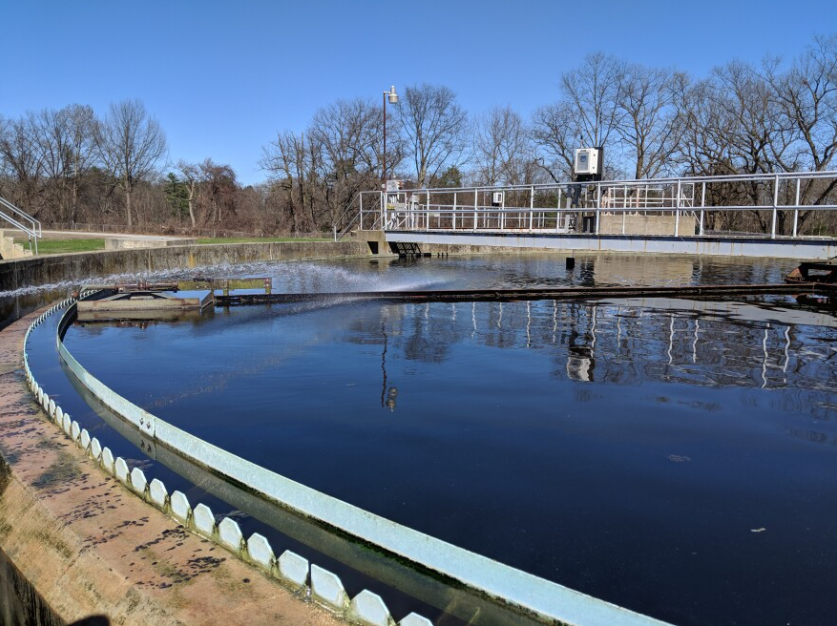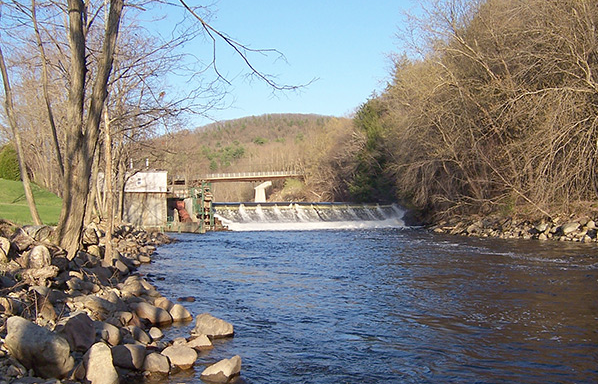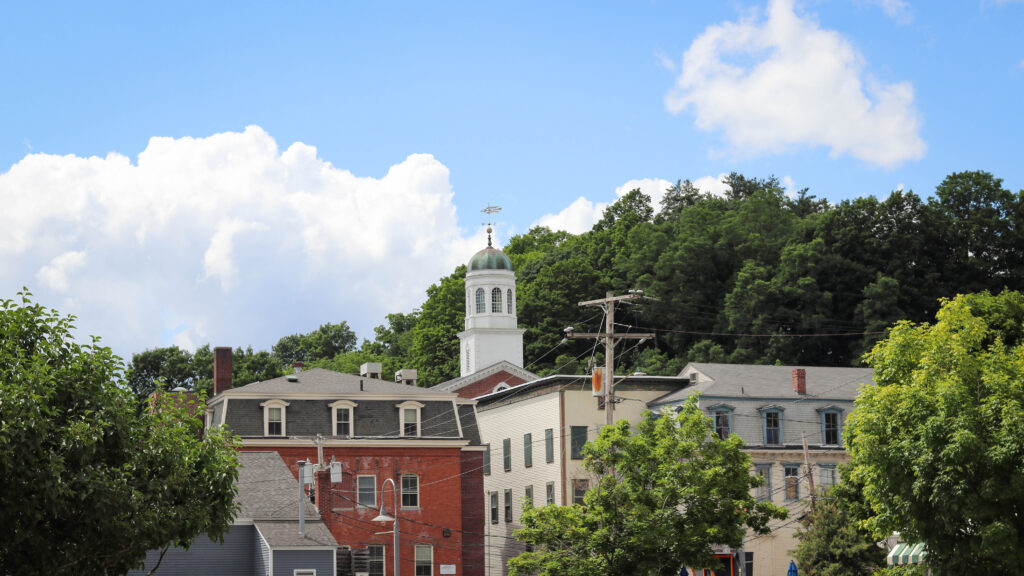
New Federal Law Offers NH Boost for Water-Related Programs and Infrastructure
- March 9, 2022
- Economic Development, Natural Resources
Last November, President Biden signed the Infrastructure Investment and Jobs Act into law. Also known as the Bipartisan Infrastructure Law (BIL), the legislation includes an unprecedented funding package for a wide variety of infrastructure development and other activities. A significant portion of funding associated with the BIL supports projects related to public water and sewer, hazardous material cleanup, and dam repair. Communities interested in upgrading and maintaining water infrastructure and taking steps to remediate environmental contamination that can enter our water should be aware of the resources made available through this once-in-a-lifetime federal investment. These provisions could have significant implications for the long-term wellbeing and economic prosperity of the region and its local communities.
Several federal agencies will oversee programs supported by the BIL. The Environmental Protection Agency (EPA) will administer $55 billion of new funding, “the single largest investment in water that the federal government has ever made”, according to a statement by the agency. The allocation will support the development of public water and sewer infrastructure, sites contaminated by PFAS (per- and polyfluoroalkyl substances), lead remediation, and more. The Federal Emergency Management Agency (FEMA), the United States Department of Agriculture’s Natural Resource Conservation Service (NRCS), and the Army Corps of Engineers will oversee new funding authorized for dam repair or removal.
Federal agencies and their state-level partners are still in the process of determining how to administer programs and funding associated with the BIL, but here are a few details about what is known so far.
Big Boost for State Revolving Funds for Drinking Water and Clean Water
Drinking water and clean water-related improvements will be administered through existing state revolving fund (SRF) programs. SRFs represent a federal-state partnership that began in 1988. Since then, SRFs have formed the foundation for water infrastructure improvements nationwide.
The BIL authorizes nearly 6 times the recent annual funding for SRFs. For New Hampshire, this represents an anticipated total purse of $72,644,000 in 2022, the first year of the 5-year program. The highest-funded project category is lead service line replacement ($28,275,000), followed by drinking water and clean water projects. The NH drinking water and clean water SRFs will also receive $8,481,000 for “emerging contaminants” such as PFAS in water-related projects.
Previously the typical SRF model was for funding as subsidized loans. Significantly, nearly half of the BIL’s stimulus funds are in the form of grants or principal-forgiveness loans. The state-required match level has also been reduced or eliminated.
State Receives Added Money to Clean Up Superfund Sites
EPA received a $3.5 billion allocation in the BIL to initiate cleanup and clear the backlog of 49 previously unfunded Superfund sites, and to speed up cleanup at dozens of other sites across the country. Our region has 2 Superfund sites: Peterborough South Municipal Well Site and the Troy Mills Landfill Site in Troy. Department of Environmental Services (DES) staff are currently interacting with their EPA counterparts to determine how to move forward and apply these funds to reduce the risk chemicals that are potential carcinogens or hazardous in other ways will enter our drinking water or ecosystem waters.
BIL Provides Dollars for Dams
Our region holds 337 active dams, serving a variety of primary purposes from recreation (boating, swimming, hiking), to provision of wildlife habitat, power, fire protection, and flood control. Each dam carries a hazard classification level, related to the risks inherent in dam breach or failure.
The BIL includes a 10-fold increase from usual federal grant money for projects related to dams classified as High hazard. This means “in a location and of a size that failure or mis-operation of the dam would result in probable loss of human life.” Towns in the SWRPC hold 33 such active dams. Of these, 5 have been determined to be in Poor condition. These are the town-owned dams of Gregg Lake Dam in Antrim, Swanzey’s Upper Wilson Pond Dam, Winchester’s Pisgah Reservoir Dam, Stoddard’s Highland Lake Dam, and the Walpole Reservoir Dam. Walpole’s dam provides its public water supply, and the remainder on the list are classified as having the principal use of recreation. FEMA is managing this program.
New funds are also available to remove dams that impede fish migration and cause other ecosystem harms. Among these the state’s Dam Bureau has prioritized 2 dam removal projects in our region, based on eligibility and their owners previously expressing interest in removal. These are the Fiske Mill Hydro Dam in Hinsdale, that impedes shad migration at a critical location, and the Stone Pond Dam in Fitzwilliam, owned by Eigentum NH LLC. Other regional dams presenting fish and other ecosystem hazards may qualify but their owners have not yet interacted with the Dam Bureau to express interest in funding for removal.

NRCS has new funding for the rehabilitation of their flood control dams. NRCS has provided the state’s Department of Environmental Services (DES) over $3 million to fund 100% of the cost of assessing these dams, and the planning or the design for the rehabilitation of the five determined to pose the greatest risk from failure. The state Dam Bureau are studying 4 dams in the Souhegan watershed—all of which are located in Temple—for eligibility for this purse.
Separate funding is provided for capital improvements to state-owned dams that provide hydropower. In our region, ones that may be eligible in this category are Steels Pond Dam in Antrim and hydro dams on the Ashuelot River. The Army Corps of Engineers regional office in Concord is managing a smaller allotment from the BIL providing direct and guaranteed loans to maintain, upgrade, and repair dams identified in the National Inventory of Dams. Details regarding eligible dams are available from the regional Corps office.
Priority Funding for Disadvantaged Communities
The Biden-Harris administration has a Justice40 initiative that targets 40% of special allocations for what they term disadvantaged communities. The state is working out what that will mean for their award process of funds newly-available under the BIL. FEMA may prioritize disadvantaged communities for dam projects it supports.
DES has an existing definition of disadvantaged for Drinking Water SRFs which generously includes all communities whose median income is below the state median. This encompasses most of SWRPC’s towns: Alstead; Antrim; Bennington; Fitzwilliam; Gilsum; Greenville; Hancock; Hinsdale; Jaffrey; Keene; Marlow; Marlborough; Peterborough (not all town locations – determined by details of the project’s geography); Richmond; Stoddard; Sullivan; Surry; Swanzey; Troy; Winchester; Windsor. The state agency also offers more favorable loan terms for disadvantaged communities awarded money under the Drinking Water SRF.
Benefits to NH towns
The funding boost supports water that is safe to drink and play in, increases resilience against extreme weather events that we are experiencing more often, and improves habitats for our flora and fauna. Water infrastructure improvements are important for preserving the natural resources that contribute to our region’s beauty, which is a key reason why residents choose to move here or stay, why students enroll in our schools and universities, and tourists come to visit. Water and sewer infrastructure is also critical for expanding housing opportunities for working families, young professionals, retirees looking to age in place, and businesses recruiting new hires.

What Communities Can Do Now to Prepare to Take Advantage of New Funding
A variety of applicants could be eligible for assistance authorized under the BIL. These include towns, water utilities and other drinking water providers, and non-profits. DES and the state Dam Bureau are awaiting guidance from EPA on use of funds they respectively administer. With regard to SRFs, the Drinking Water and Groundwater Bureau don’t yet know whether private water systems and innovative, small-scale systems will be eligible.
Now is the time for our communities to determine and prioritize their capital needs, and to develop project pipelines. What projects were previously considered impossible due to lack of money? Do you need financial assistance to manage the water infrastructure for needed or planned housing construction? Is lead poisoning from contaminated water a known problem in your community? Does a Public Water Supplier need to inventory its service lines for lead pipes? DES is currently preparing a template for towns to use for these inventories that are mandated under the state’s lead and copper rule.
Have a look at the Bipartisan Infrastructure Law Guidebook to identify federal funding streams to target your needs.
Accessing BIL Funding for Water and Sewer Improvements
The loan or grant application process for clean water and drinking water SRFs is expected to be the same as for ARPA money. The usual timeline entails solicitation for pre-applications in April, and a June deadline for pre-applications for this year’s disbursement. Successful pre-applicants are asked to complete a full application with a later deadline.
Especially relevant for new potential applicants, the BIL includes funding to EPA to provide technical assistance to disadvantaged communities applying for funds. Details on how municipalities can access technical assistance are still forthcoming.
DES is currently preparing to offer a workshop for potential grant and loan applicants for SRF-administered funds. This event is planned for April 11-15. The format may be 2-3 hours/day of webinar presentations on topics such as funding program updates, including the BIL and ARPA, federal provisions, storm water, and asset management. They anticipate interested parties to include current/future loan recipients, community/financial decision makers, public works directors, city/town managers, municipal and regional planners, consultants/engineers, and operators. Further information is available on the DES website.
Top image courtesy of NHPR, photographer Annie Ropeik.



